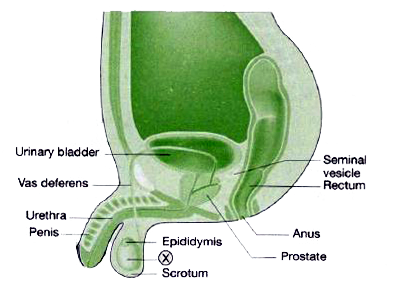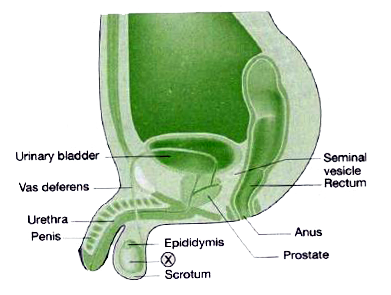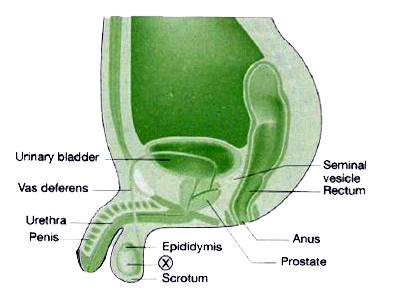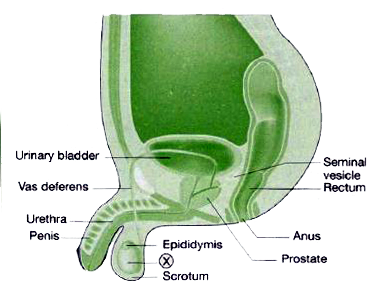The earliest known jawless fossil vertebrates with heavy armour or dermal plates are collectively called the :
arthrodira
placoderms
acanthodii
ostracoderms
The correct Answer is:D
Step by step video, text & image solution for The earliest known jawless fossil vertebrates with heavy armour or dermal plates are collectively called the : by Biology experts to help you in doubts & scoring excellent marks in Class 12 exams.
Updated on:21/07/2023Topper's Solved these Questions
- ORGANIC EVOLUTION BOOK - GRB PUBLICATIONCHAPTER - ORGANIC EVOLUTION EXERCISE - CONTINENTAL DRIFT
5 Videos
- ORGANIC EVOLUTION BOOK - GRB PUBLICATIONCHAPTER - ORGANIC EVOLUTION EXERCISE - LAMARCK S THEORY
24 Videos
- ORGANIC EVOLUTION BOOK - GRB PUBLICATIONCHAPTER - ORGANIC EVOLUTION EXERCISE - AGE OF FOSSILS
9 Videos
- MICROBES IN HUMAN WELFAREBOOK - GRB PUBLICATIONCHAPTER - MICROBES IN HUMAN WELFAREEXERCISE - Assertion-Reason Type Questions
49 Videos
- ORGANISMS AND ENVIROMENT BOOK - GRB PUBLICATIONCHAPTER - ORGANISMS AND ENVIROMENT EXERCISE - MULTIPLE CHOICE QUESTIONS
248 Videos
Similar Questions
The human reproduction is a process by which the humans give birth to live offspring's. The male and female organs essential for reproduction are called sex organs and they are collectively known as human reproductive system. Check the figure and answer the following questions.

How does sperm move through vas deference?
View SolutionThe human reproduction is a process by which the humans give birth to live offspring's. The male and female organs essential for reproduction are called sex organs and they are collectively known as human reproductive system. Check the figure and answer the following questions.

Name the organ which produces male gametes.
View Solution
Knowledge Check
Select the incorrect statements among the following.
(i) Bitumen is used for metalling the roads.
(ii) Some inexhautible natural resources like coal, petroleum and natural gas formed from the dead remains of living organisms are known as fossil fuels.
(iii) many useful substances are obtained from coal so, it is also called black gold.
(iv) Natural gas is used as a starting material for the manufacture of a number of chemicals and fertilizers.AI and iiBii and iiiCii and ivDII,iii and ivSelect the incorrect statements among the following:
(i) Bitumen is used for metalling the roads.
(ii) Some inexhaustible natural resources like coal, petroleum and natural gas formed from the dead remains of living organisms are known as fossil fuels.
(iii) Many useful substances are obtained from coal so, it is also called 'black gold'.
(iv) Natural gas is used as a starting material for the manufacture of a number of chemicals and fertilisers.A(i) and (ii)B(ii) and (iii)C(ii) and (iv)D(i) , (ii) and (iv)Although every element is different from every other element, yet some elements have certain similarities. Based upon these similarities, the scientists after numerous attempts were are given. Based upon these multiple choice questions are ultimately sucessful in arranging the various elements into groups or chemical families in such a way that similar elements were put together. This arrangement of elements is called classification of elements and this led to the formulation of a periodic table. The periodic table is the most organising principle in chemistry. If you know the properties of any element in a group, or of the columns, of the periodic table, you can make a good guess at the properties of every other element in the same group and even the elements in the neighbouring groups. The first break through in the classification of elements, was provided by Russian chemist Dmitri lunovich Mendeleev. Taking the chemistry of the elements as his primary organising principle, he arranged the known elements by atomic mass and grouped them together according to their chemical reactivity He also observed that there occurred recurrence of elements with similar physical and chemical properties after certain regular intervals. On the basis of these similarities Mendeleev proposed his periodic law which states that physical and chemical properties of elements are a periodic function of their atomic masses Moseley suggested that atomic number was a better fundamental property of an element than its atomic mass. This forms the basis of the Modern periodic law. Thus, modern periodic law states that physical and chemical properties of the elements are a periodic function of their atomic numbers. In the modern long form of periodic table the elements are arranged in the increasing order their atomic numbers and the elements with similar properties repeat after regular intervals. Repetition of chemical properties of elements at regular intervals when arranged in a definite order is called periodicity of properties. This is due the recurrence of similar outer electronic configuration at certain regular intervals. The long form of periodic table may be divided into four main blocks known as s, p, d and f blocks depending upon the type of orbitals being filled up with the increase in atomic number in atoms of the elements. The nature of the block to which an element belongs depends upon the type of subshell which receives the last electron.
In the long form of periodic table, all the non-metals are collectively placed inAs-blockBp-blockCf-blockDd-block
The human reproduction is a process by which the humans give birth to live offspring's. The male and female organs essential for reproduction are called sex organs and they are collectively known as human reproductive system. Check the figure and answer the following questions.

Does sperm appear to be a single cell?
View SolutionThe human reproduction is a process by which the humans give birth to live offspring's. The male and female organs essential for reproduction are called sex organs and they are collectively known as human reproductive system. Check the figure and answer the following questions.

Identify the figure and name the label (X).
View SolutionFill in the blanks:
A. Chemical _______ and ___________ are the sources of widespread pollution.
B. Spores of Bacillus ___________ Bacillus _________ Produce insecticidal_______Protein.
C. Biofertilisers promote plant growth and protect plants from soil _______
D. Mycorrhizae help in solubilisation of ________ which is present in soil in the insoluble forms
E. Rhizobia form root ______ in ________ crops and some_______ form symbiotic association with the fern Azolla.
F. Different varieties of cheese are known by their characteristic___________
G. Single cell protein (SCP) provides a valuable _____ rich supplement in _______ diet.
H. The sewage water is treated till the BOD is found to be_____
I. The bacteria responsible for production of biogas are collectively called _______
J. ______ grwo in milk and convert it to curd.
View SolutionThe substance W is a folssil fuel . It occurs deep below the ground in certain areas of the earth. Another fossil fuel X is found trapped above the deposits of W. When W is subjected to a process called Y, then a number of different products are collected at different temperature ranges which are put to different uses. A special grade of product Z obtained in this way is used as aviation fuel in jet aeroplanes.
b) What is physical state of (i) W, and (ii) X ?
View SolutionSelect the total number of false statement from the following
(i) The globular head is an active ATPase enzyme and has binding sites for ATP and active sites for Myosin.
(ii) Each Myosin (think) filament is also a polymerized protine.
(iii) Many monomeric proteins celled Meromyosins canstitute one thick filament.
(iv) Each meromyosin has two important parts, a globular head with a short arm and a til, the former being
Called the heavy meromyosin (HMA) and the latter, the light meromysin (LMN).
(v) The HMM component, i.e., the head and short arm projects outwards at regular distance and angle from
each other from the surface of a polymerized myosis filament and is known as cross arm
View Solution